Suzuki GSX-8S Review
Suzuki GSX-8S tested by Wayne Vickers
We recently got to get our hands (and bums) on Suzuki’s much anticipated new GSX-8S when attending the Aussie launch on Queensland’s glorious Sunshine Coast. It shares the same frame and engine as it’s sister bike, the V-Strom 800DE that Trev put through its paces in Kiwi land on that launch. And much like the new V-Strom, there’s a lot to like about the new 8S.
We put it through a solid 300 km plus road loop on day one, starting in and around town from Maroochydore to begin with, and then stretching its legs as we travelled south through the hinterland to Clear Mountain. Then day two saw us throw it around Lakeside Raceway – what a challenging track that is, we’ll get back to that later.
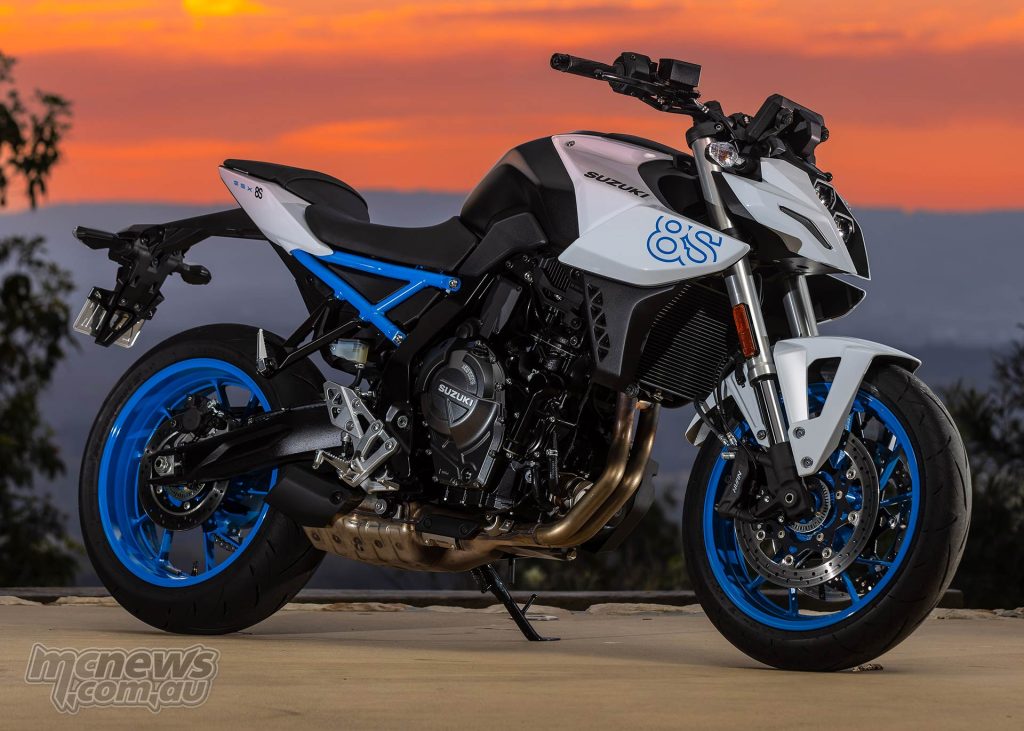
It cuts quite the impressive figure in the metal. Nice lines, aggressive frontal treatment with bold colours and graphics arguably aimed at a younger demographic than some of its competitors. Love the blue. Very Suzuki. ‘Micron blue’ I’m told, or ‘Pearl Cosmic blue’ according to earlier releases. Not sure. Sweet colour though.
I was in the minority amongst the journos on the launch in actually preferring the white scheme over the blue (and black), as I thought it made the blue wheels and trellis frame pop even more than the all blue scheme. Maybe just a bit classier too. But taste is subjective for sure.
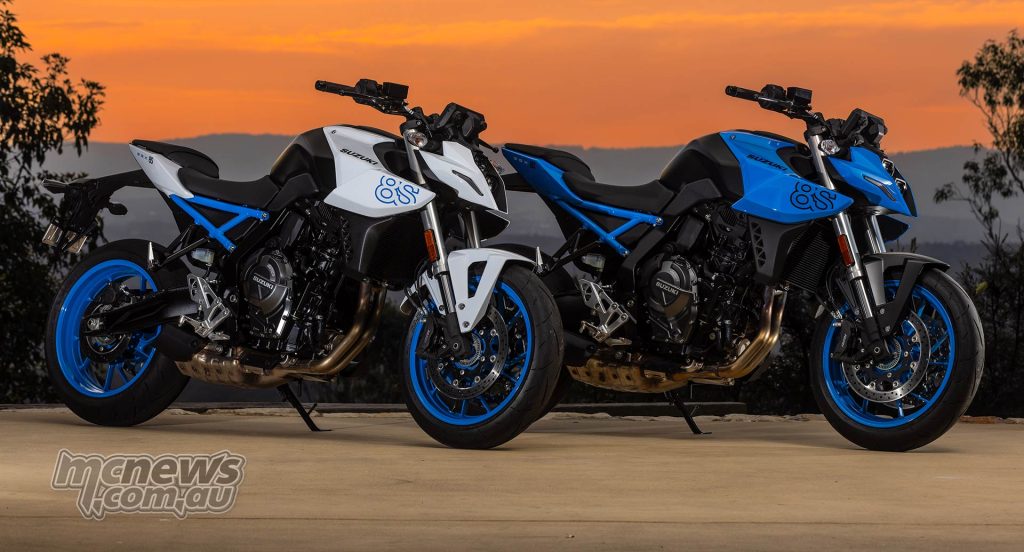
I reckon they missed an opportunity with the black scheme to make the subframe and wheels match colour like they did on the white scheme but thats probably just me. On the black scheme the subframe is actually a gun metal/anthracite colour and is quite nice albeit very subtle. Could have gone further there, but I know a couple of the journos did go for the black of all three.
I also noticed that there didn’t seem to be any areas that looked underdone. Even the swingarm had a nice looking finish – unlike some other competitors in the segment which look a little like an afterthought.
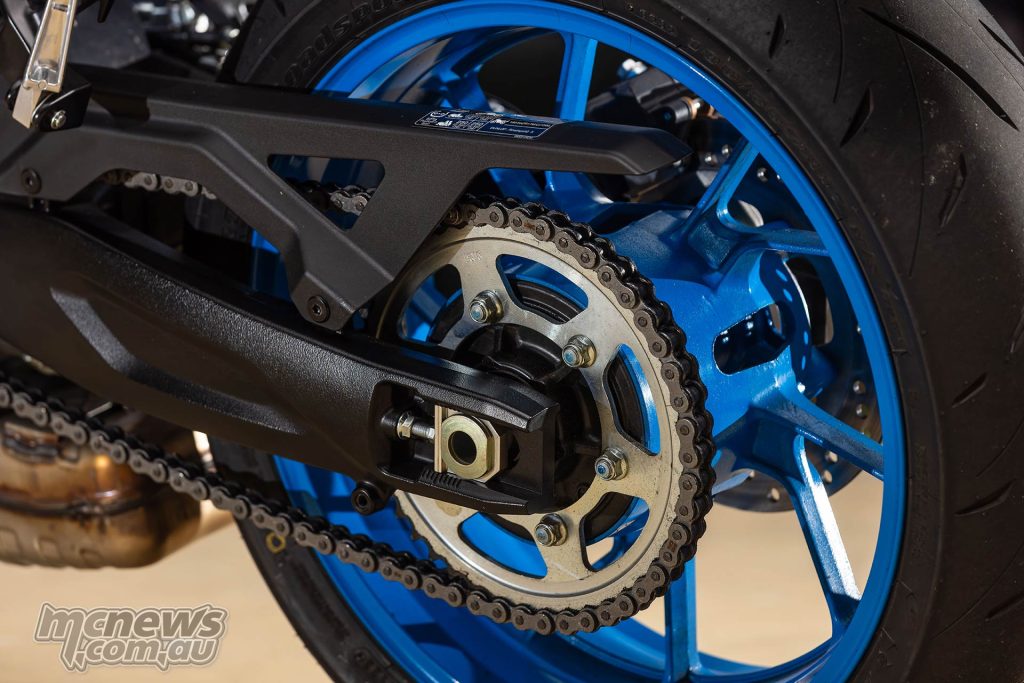
Design and finish overall looks polished. That TFT screen being the best I have seen with what Suzuki are calling ‘Optical Bonding’ technology to make it clearer and easier to read in all lighting conditions. Well laid out too, far better than previous Suzuki dash layouts I recall – the display is bright and clear and didnt seem to be bothered with reflected light. However the tech works… it works well. Very nice.
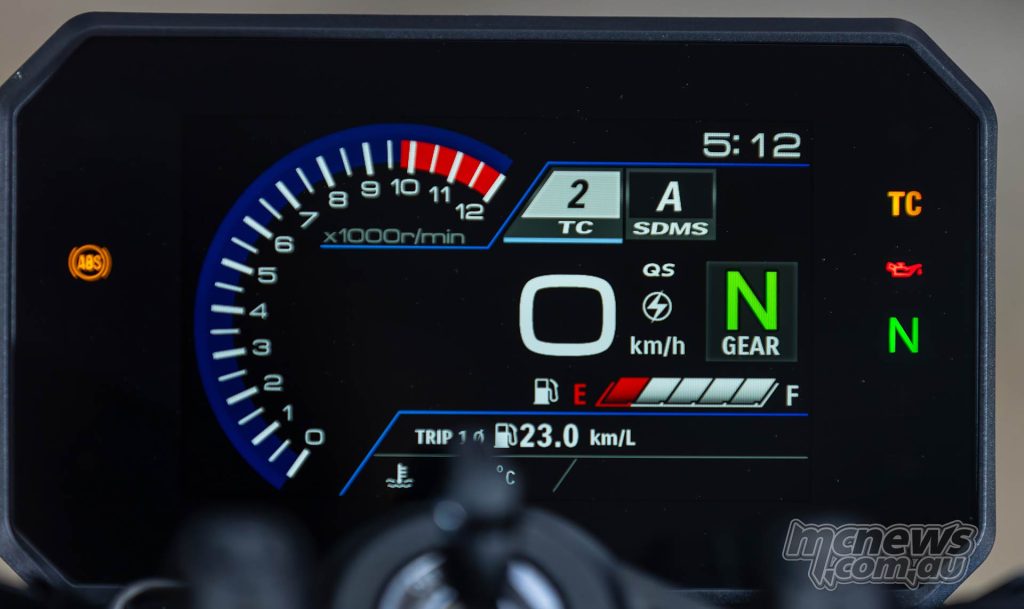
For those not familiar with the platform, its running Suzuki’s new 776 cc parallel twin, surprisingly their first all new engine since the 2017 Gixxer thou VVT donk was introduced. Can you believe that? And the 8S and V-Strom 800 are the brand’s first new models in five years! Good to see them back at it.
In this guise that new engine is punting out 83 hp at 8,500 rpm and 78 Nm at 6,800 rpm which suggests a very slight change in tune from the V-Strom. Or maybe it was measured on a different dyno. Who knows. What I did spot in the press briefing was that it looked like the new 800 donk has more torque from just off idle than the outgoing 650 had at peak. And it has a 270 degree crank for a proper v-twin-sequence exhaust note. Winning.
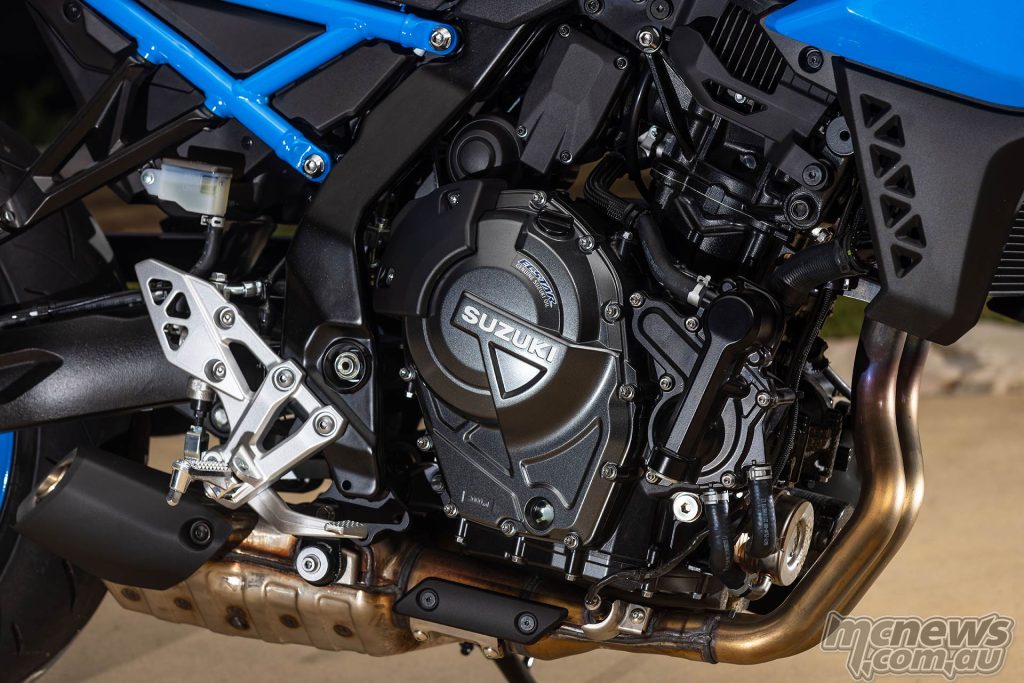
The move from v-twin in the outgoing 650 engine to parallel in the 800 shows its obvious engineering packaging benefit when lined up side by side. Its a much more compact engine able to be positioned far better for mass centralisation and clearance. Interestingly the balance shafts are located at 90 degrees too rather than the standard 180, which also means a more compact unit.
And the air intake is positioned behind the engine at the rear of the head, not the usual position in front – again done with packaging in mind. The air box is actually tucked away under the seat, accessible via an Allen key thats stored under the pillion seat. Thoughtful. And the exhaust is Suzuki’s first stubbie design. Looks horn. Could do with some more decibels though. Quite restrained aurally I thought for what is a fairly bold looking bike. I’d be doing something there before mine even left the showroom I reckon.
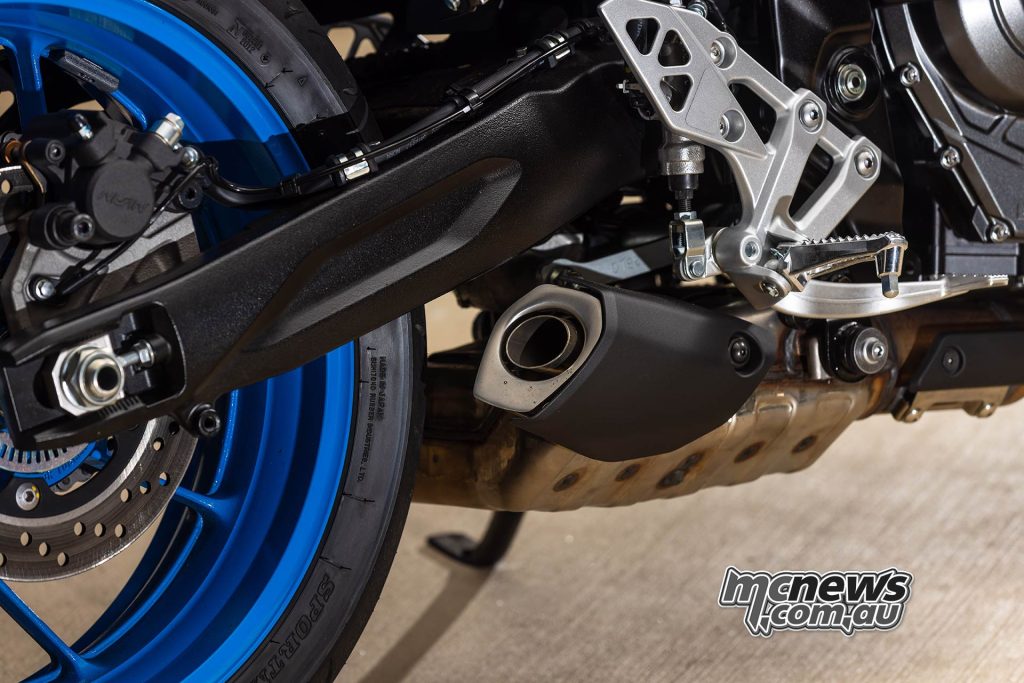
While we’re on the engine, the fuelling is bang on. Not overly sensitive or snatchy even in the sportiest mode. Absolutely nailed. They’ve done well here. Why can’t other manufacturers deliver in such a way? I left mine in ‘A’ mode, the most sporty (Active, with B – Basic and C – Comfort also available) and I’m not sure I’d ever change it out of that mode. No need. It’s lovely and strong off the bottom and that fuelling allows you to roll on the gas nice and early with plenty of confidence. Worth noting that all three modes have the same peak power – but with B and C having the bottom and midrange progressively pulled back.
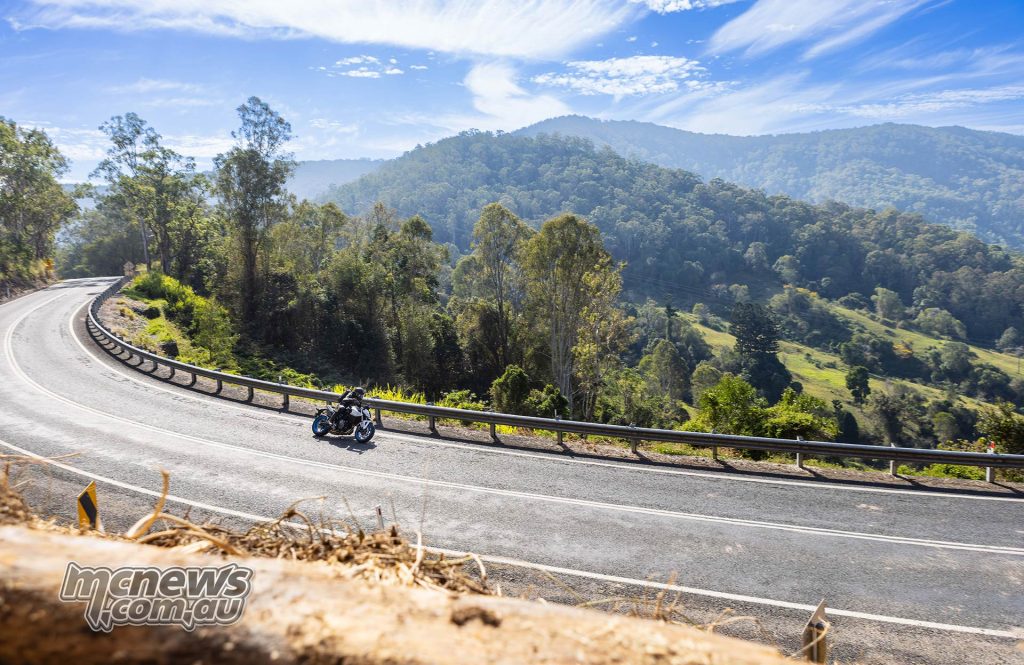
Traction control also has three modes, progressing in intervention from one being the most sporty, to three, the most intrusive being designed for slippery surfaces. In truth there is really four modes. The fourth being ‘off’. Which allows wheelies. So guess where mine stayed… These modes are easily controlled on the left switch block via nice big buttons, are remembered even when you turn the key off. More of that please manufacturers. That should be the default standard.
I would have played with putting it back at setting one at Lakeside with more time which would have been interesting to compare lap times. The right hand side of my rear tyre was showing signs of my hamfisted-ness. I wonder if a little TC would have cleaned that up…
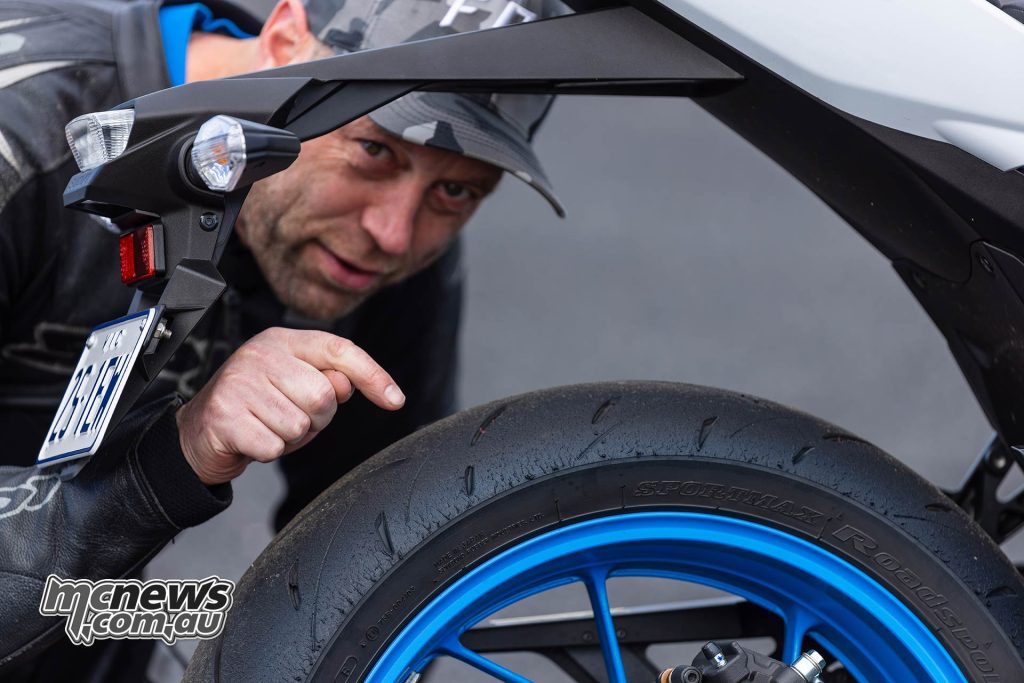
It has an 810 mm seat height but feels lower than that. Its nice and narrow at the front and the seat itself is plenty comfy although I could feel the ‘front’ of the pillion seat on my tailbone. It wasn’t uncomfortable – it was just noticeable. No issues comfort-wise at all after a 300 plus kilometre day in the saddle. In fact overall I liked the dimensions a lot. At just under 6 ft in the old scale (around 181 and a bit cm) I’m pretty average in terms of height.
Suspension-wise the 130 mm travel USD forks from KYB up front do a solid job up front. They aren’t adjustable, but I wasn’t looking for any change, good bump control and plenty of feedback telling you what’s going on – without being harsh. A happy compromise. Out the back the rear shock is adjustable for preload and although I didnt think it needed any adjustment on the road, after firming it up 2 clicks for Lakeside, which is quite bumpy… I’d actually leave it that way for the road too.
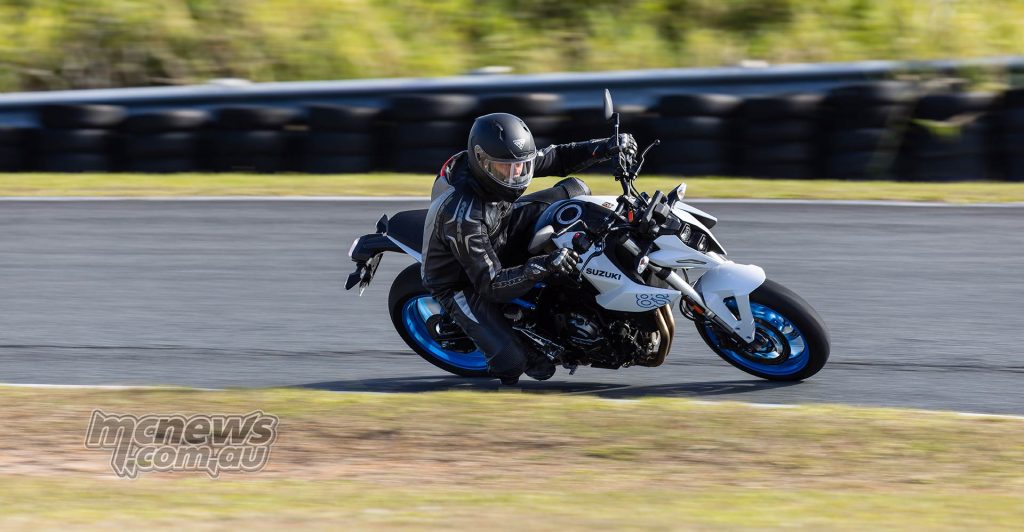
That little steeper angle of attack making it tip in just that little more easily. I don’t think it tips in quite as eagerly as the Hornet. No doubt somewhat courtesy of the Hornet’s 160 rear tyre compared to the 8S’s 180, but once attuned I had no issue with the handling or steering at all. Very intuitive. And it feels absolutely planted on its side.
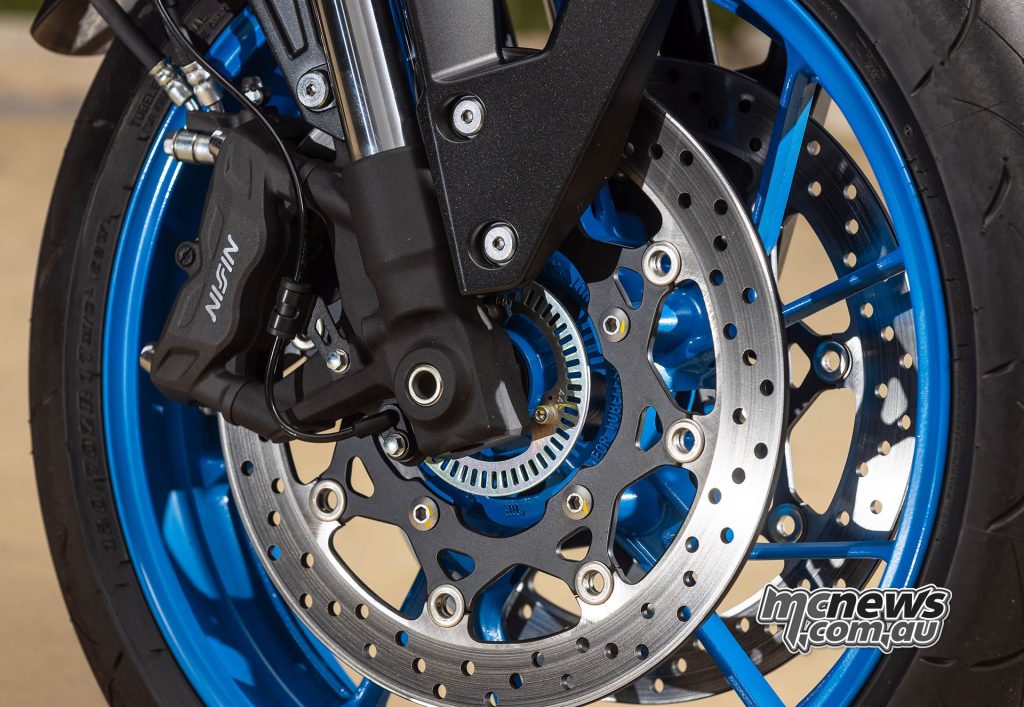
Braking is handled via 310 mm Nissin twins up front and a single 240 mm out back and they felt pretty much Goldilocks for me. Great feel, plenty of power and no fade on the track for me. I was focussing more on staying smooth to be honest rather than being the last of the late brakers on a track I was just learning, but they felt more than up to the task.
On the road its an absolute joy. The engine and gearbox being a delight. That bi-directional quickshifter is up there with the best. Just brilliant. Once on the move I basically didnt use the clutch at all. Its just super smooth in almost all revs, making for a cracking ride. Great in town. Great out of town. Great on the track…
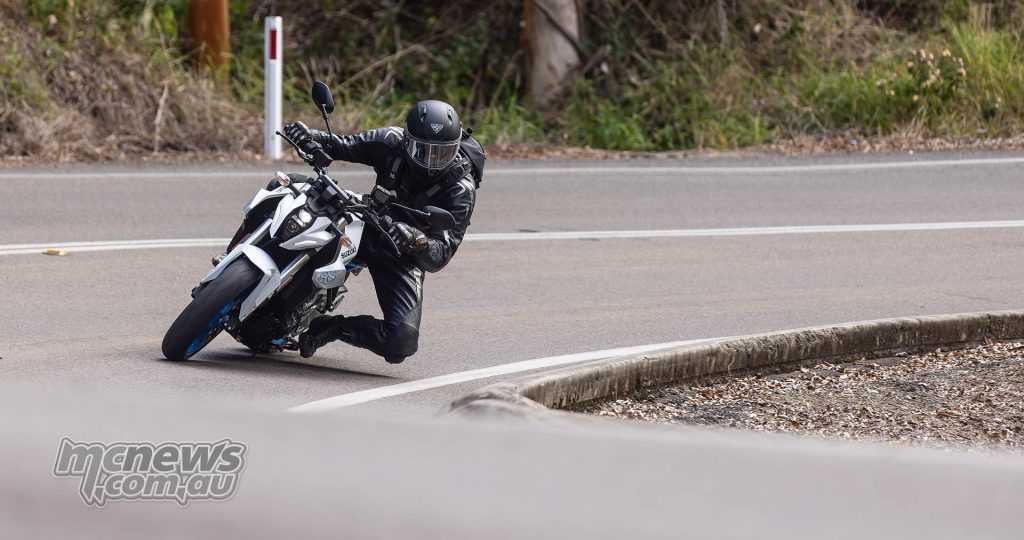
The lack of any short screen is fine by me. No buffeting at all, just solid wind on your chest. Which I reckon is part of the reason naked street bikes are so popular. That wind makes them feel fast when you’re fanging up your favourite road section. My old blade used to have to be going 160 plus before it felt like it was going anywhere. And you can’t go doing that on the road these days…
But it was at Lakeside that I was probably the most surprised. What can be a great road bike can sometimes come up short when pushed on the track. Not so in this case. It just got better and better.
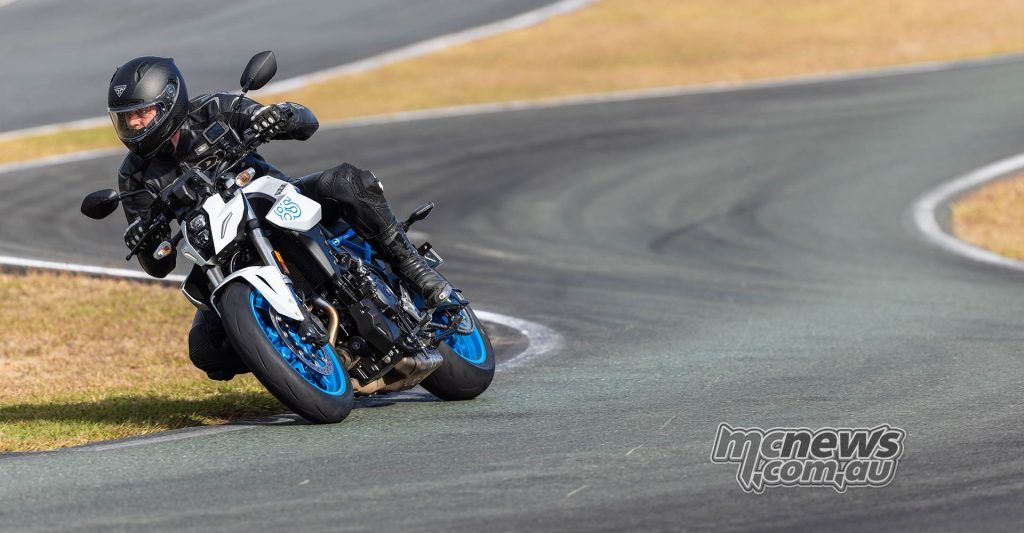
Now Lakeside is not an easy track to learn as I found out. Nearly every corner is either blind or has a camber change. It’s bumpy and the ‘bus-stop’ section feels awkwardly slow and narrow compared to the rest. But it’s a cracker of a track. And perfect for the 8S. I was seeing 190 at the kink on the front straight. Gilesy who joined us on track to show us Gumby’s which way to go, was seeing 199 there and was of course in another league not just through there but.. well.. everywhere. He might have retired a while ago, but he still gets along okay…
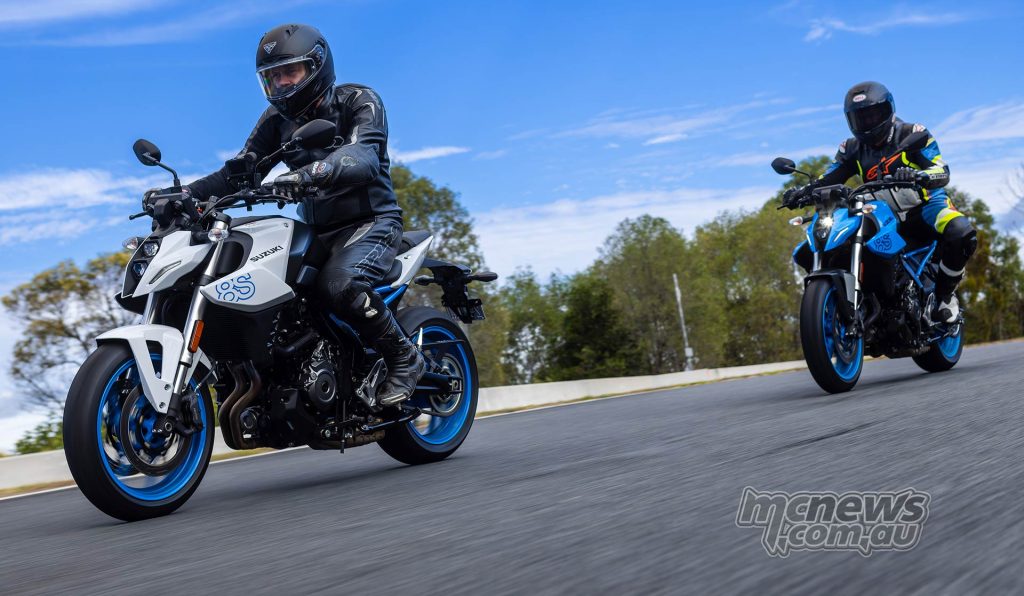
I actually had a ball at the 2.1 km circuit. Awesome little track with some cracking corners. Turn two in particular was my nemesis. I reckon I managed to get it right twice! And coming into the bus stop over that crest is interesting. Even moreso when there are mobile canine chicanes on the track. There should be helmet footage of that moment where my sphincter went into action. Go home doggo’s. A high speed pat is not what you are looking for.
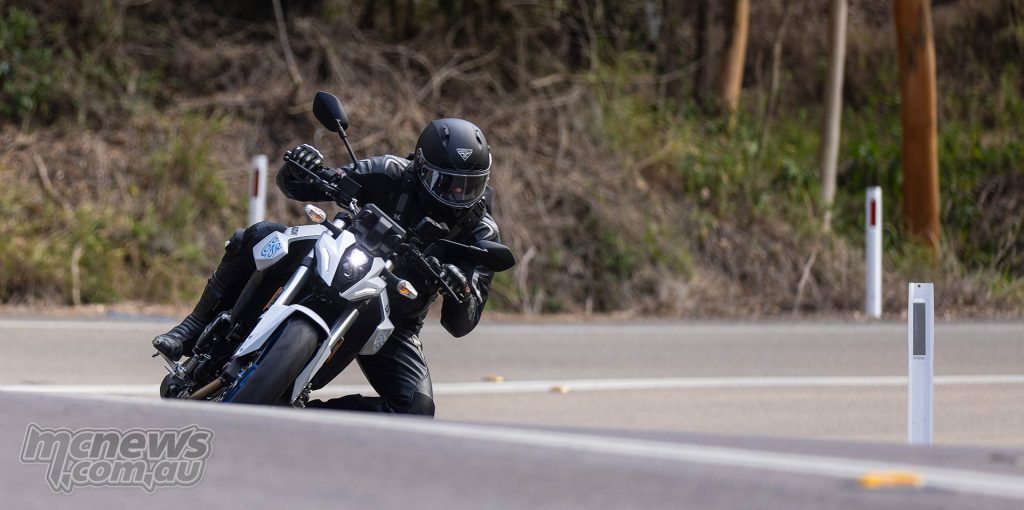
My lack of track time was the limit here. Not the bike. While my lap times weren’t going to be putting me on a front row anytime soon, my last six laps were all within a second of each other. So I might be a bit slower than I used to be, but at least I’m consistently slow 🙂
All in all though, the 8S was more than up to the task and as a package instilled so much confidence that I could fully focus on the ride and enjoy myself. It does nothing badly, but more importantly does everything well. There is a whole lot to like about this bike. It’s quite eager to point the front up in both first and second if you do your bit too. Probably a little more eager than the Hornet if that’s your thing.
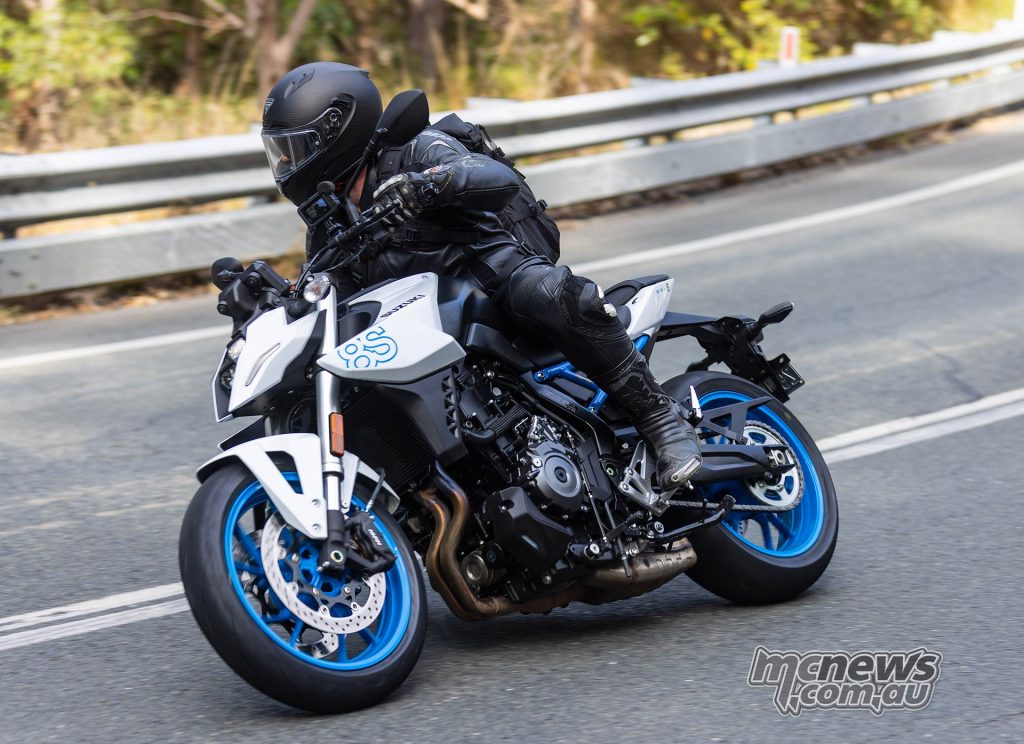
I did mention at the opening that there is plenty of interest in the bike and much of the interest is coming from the ‘how does it compare to the new Honda Hornet?’ perspective. Given that I still have a Hornet in my shed, I’d like to think I have some idea. While it’s always hard without riding them back to back, my impressions are that while the Suzuki is a little heavier and a little down on power, but importantly it’s a little up on torque.
That extra torque seems to remove the weight gap on the road and they’d have to be very, very close performance wise. I’d suggest the 8S feels a little stronger down low and through the mid-range which makes for a slightly more usable engine. The Suzuki might need a pinch more effort to change direction, but probably feels more planted on its side.
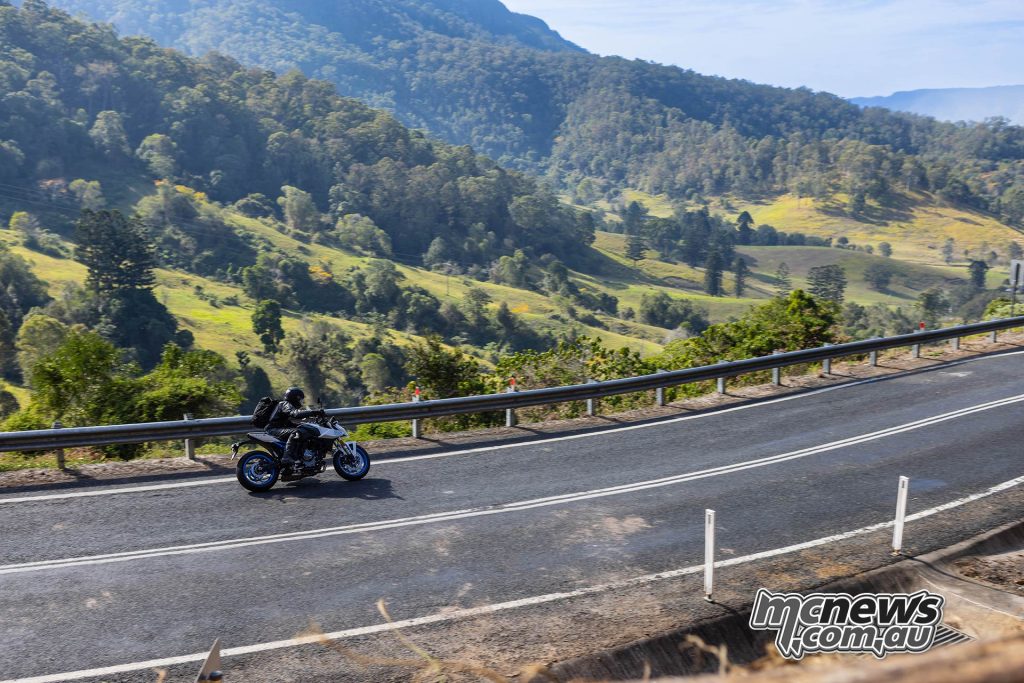
The thought did occur to me that it feels somewhere between the MT-07 and MT-09 which shouldn’t be a surprise when its pointed out, with it being an 800… but I do love that engine size. I said the Hornet reminded me of my old CBR6 F4i, and this does too. Maybe even moreso. Cracker of a bike. At 14 grand on the road (which includes that brilliant quick-shifter), they should sell by the truck load. It already has plenty of factory options available for it, but I’d have to go for a more open muffler or maybe even a full system to liberate both more noise and a handful more ponies. That is literally all I’d change. And then just have miles and miles of smiles.
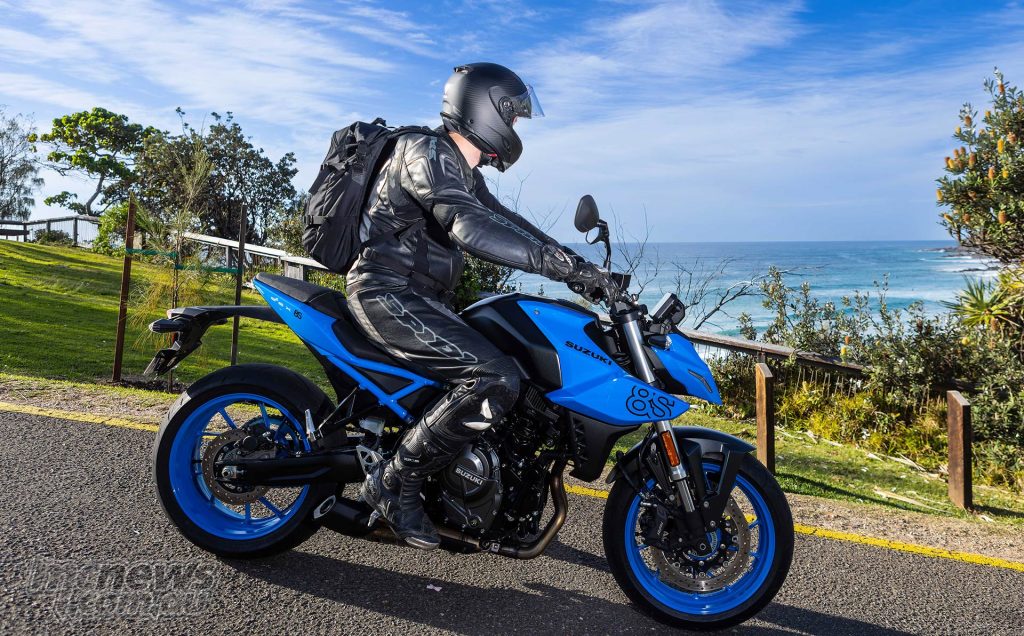
Wayne likes the GSX-8S because….
- Belter of an engine and delicious quickshifter
- Lovely styling and finish
- Its just so well rounded, does everything well and is totally confidence inspiring
Wayne would like the GSX-8S more if….
- Throw a Yoshi full system on it, tune accordingly and I’d be a happy camper
- That’s it. Really!
2023 Suzuki GSX-8S Specifications
| 2023 Suzuki GSX-8S Specifications | |
| Engine | 4-stroke, 2-cylinder, liquid-cooled, DOHC |
| Bore x stroke | 84.0 mm x 70.0 mm (3.3 in. x 2.8 in.) |
| Displacement | 776 cc (47.4 cu. in.) |
| Compression | 12.8 : 1 |
| Claimed Power | 83 hp (61 kW) at 8500 rpm |
| Claimed Torque | 78 Nm at 6800 rpm |
| Induction | EFI, 2 x 42mm throttle bodies, Rbw |
| Lubrication system | Forced feed circulation, Wet sump |
| Transmission | Six-speed constant mesh, optional two-way quick-shift |
| Suspension Front | Inverted telescopic, coil spring, oil damped |
| Suspension Rear | Link type, coil spring, oil damped, preload adjustable |
| Rake / trail | 25° / 104 mm (4.1 in.) |
| Brake | Dual 310 mm rotors, radial four-pot calipers (F), 240 mm single-pot caliper (R) |
| Tyres | 120/70-17 (F), 180/55017 (R) |
| Fuel capacity | 14 L |
| Overall length | 2,115 mm (83.3 in.) |
| Overall width | 775 mm (30.5 in.) |
| Overall height | 1105 mm (43.5 in.) |
| Wheelbase | 1465 mm (57.7 in.) |
| Ground clearance | 145 mm (5.7 in.) |
| Seat height | 810 mm (31.9 in.) |
| Kerb mass | 202 kg (445 lbs.) |
| RRP | $14,190 Ride Away |
For more information check out the Suzuki Motorcycles Australia website (link)



























































